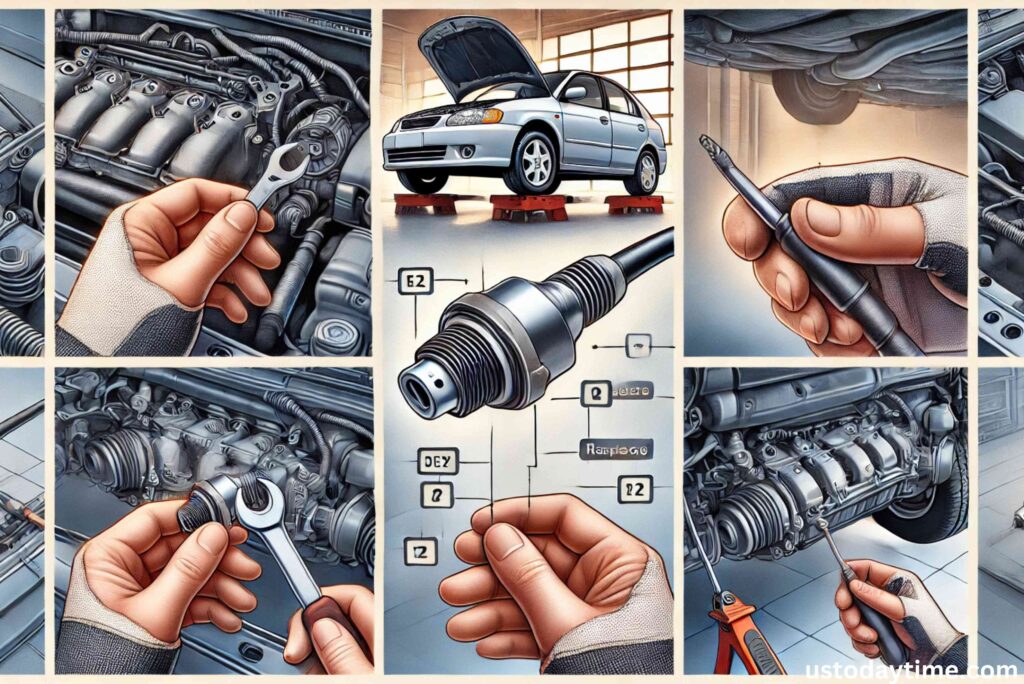If you’re a proud owner of a 2018 BMW M550 xi, you already know it’s a powerful and luxurious vehicle. But what happens when that pesky check engine light turns on? Often, it could be related to the O2 (oxygen) sensor. In this article, we’ll guide you through understanding the O2 sensor, locating it in your car, and why it matters. Consider this your ultimate DIY helper for the 2018 BMW M550 Xi O2 Sensor Location.
Introduction to the O2 Sensor
An oxygen sensor, or O2 sensor, is a small yet vital component in your vehicle’s emission system. It’s like a doctor monitoring your car’s breathing to ensure it’s healthy and running efficiently. But where exactly is it located in the 2018 BMW M550 xi? Let’s dig deeper.
What Does an O2 Sensor Do?
The O2 sensor measures the oxygen levels in the exhaust gases leaving your car’s engine. By sending this data to the engine control unit (ECU), the car adjusts the air-to-fuel ratio for optimal performance and reduced emissions. Think of it as your car’s fitness tracker, ensuring it’s running at its best.
Signs Your O2 Sensor Needs Replacement
How do you know when your O2 sensor is on its last leg? Here are some common signs:
- Check Engine Light: The most obvious sign.
- Poor Fuel Economy: If your car drinks fuel faster than usual.
- Rough Idling: The engine feels shaky when idle.
- Failed Emissions Test: A faulty sensor can lead to higher emissions.
Why the O2 Sensor Is Critical
A faulty O2 sensor doesn’t just harm your car’s performance; it can also increase fuel consumption and emissions. Ignoring it can lead to costly repairs, like damage to the catalytic converter. Addressing O2 sensor issues promptly keeps your BMW in peak condition.
Understanding the 2018 BMW M550 xi’s Layout
Before locating the O2 sensors, it’s crucial to understand your car’s layout. The 2018 BMW M550 xi has a twin-turbocharged V8 engine. This setup means there are multiple O2 sensors to monitor the performance of both the engine and the catalytic converters.
How Many O2 Sensors Does Your Car Have?
The 2018 BMW M550 xi typically has four O2 sensors:
- Two upstream sensors (before the catalytic converters).
- Two downstream sensors (after the catalytic converters).
These sensors work together to maintain engine efficiency and emissions compliance.
Locating the O2 Sensors: Step-by-Step
Here’s how you can locate the O2 sensors in your BMW:
- Lift the Car Safely: Use a jack and jack stands to safely elevate the vehicle.
- Identify the Exhaust System: Follow the exhaust pipes from the engine to the rear of the car.
- Locate the Upstream Sensors: These are closer to the engine, right before the catalytic converters.
- Find the Downstream Sensors: These are located after the catalytic converters, closer to the mufflers.
Always keep in mind working on a cool engine helps prevent burns.
Tools You Need for the Job
To replace the O2 sensor, you’ll need:
- Socket wrench
- O2 sensor socket
- Penetrating oil (to loosen stubborn sensors)
- Safety gloves and goggles
- Jack and jack stands
Step-by-Step Guide to Replacing the O2 Sensor

Ready to replace the O2 sensor? Follow these steps:
- Disconnect the Battery: Prevent electrical issues by disconnecting the negative terminal.
- Locate the Faulty Sensor: Use an OBD2 scanner to identify which sensor needs replacing.
- Remove the Old Sensor: Spray penetrating oil on the sensor threads and use the O2 sensor socket to unscrew it.
- Install the New Sensor: Screw in the new sensor by hand first, then tighten it with the socket wrench.
- Reconnect the Battery: Start the car and check if the check engine light turns off.
Tips for Testing the New Sensor
After installation, use an OBD2 scanner to verify the sensor is functioning correctly. Drive your car for a few miles and monitor performance improvements.
Common Mistakes to Avoid
- Forgetting to Disconnect the Battery: This can cause electrical shorts.
- Cross-Threading the Sensor: Always thread the sensor carefully to avoid damage.
- Skipping Diagnostic Scans: Ensure the issue is truly with the O2 sensor.
Preventive Maintenance for O2 Sensors
To extend the life of your O2 sensors:
- Use high-quality fuel.
- Perform regular engine tune-ups.
- Address exhaust system issues promptly.
Cost of Professional vs DIY Replacement
Hiring a mechanic can cost $200-$400 per sensor, including labor. A DIY replacement costs around $50-$100 for the sensor itself, saving you a significant amount.
Can You Drive with a Faulty O2 Sensor?
While you can drive with a faulty sensor, it’s not advisable. Over time, it can damage your catalytic converter and lead to more expensive repairs.
Conclusion and Final Tips
Replacing the O2 sensor in your 2018 BMW M550 xi might seem daunting, but with the right tools and guidance, it’s manageable. Regular maintenance and timely repairs keep your car running smoothly and efficiently. So, roll up your sleeves, and let’s get that sensor sorted out!
FAQs
1. How can I tell which O2 sensor is faulty?
Use an OBD2 scanner to diagnose which sensor is malfunctioning. It will provide a code corresponding to the faulty sensor.
2. Do I need to replace all O2 sensors at once?
Not necessarily. Replace only the faulty sensor unless others show signs of failure.
3. Can I clean an O2 sensor instead of replacing it?
While cleaning might temporarily improve performance, it’s not a long-term solution. Replacement is often the best option.
4. How often should O2 sensors be replaced?
Most sensors last 60,000 to 100,000 miles, depending on driving conditions and maintenance.
5. What happens if I ignore a faulty O2 sensor?
Ignoring it can lead to poor fuel economy, higher emissions, and potential damage to the catalytic converter
